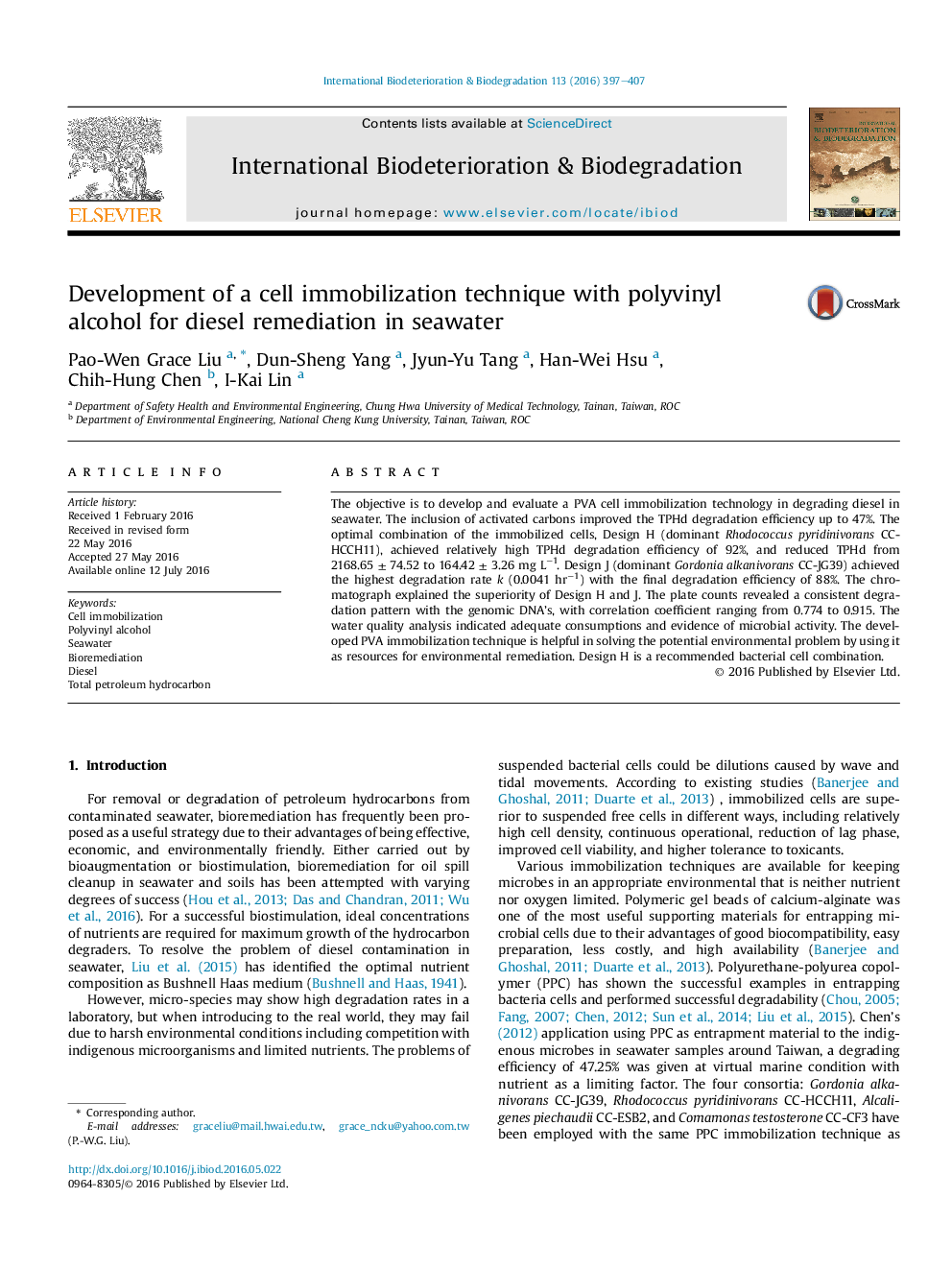| Article ID | Journal | Published Year | Pages | File Type |
|---|---|---|---|---|
| 4364113 | International Biodeterioration & Biodegradation | 2016 | 11 Pages |
•Polyvinyl alcohol was used to entrap Rhodococcus pyridinivorans and Gordonia alkanivorans for diesel seawater remediation.•The optimal combination was CC-HCCH11 (Rhodococcus pyridinivorans) : CC-JG39 (Gordonia alkanivorans) = 5 : 1.•The dominant CC-HCCH11 deisgn produced the excellent TPHd degradatbility both with the existing PPC and the proposed PVA.•The extracted genomic DNA’s have potential for further molecular analysis.
The objective is to develop and evaluate a PVA cell immobilization technology in degrading diesel in seawater. The inclusion of activated carbons improved the TPHd degradation efficiency up to 47%. The optimal combination of the immobilized cells, Design H (dominant Rhodococcus pyridinivorans CC-HCCH11), achieved relatively high TPHd degradation efficiency of 92%, and reduced TPHd from 2168.65 ± 74.52 to 164.42 ± 3.26 mg L−1. Design J (dominant Gordonia alkanivorans CC-JG39) achieved the highest degradation rate k (0.0041 hr−1) with the final degradation efficiency of 88%. The chromatograph explained the superiority of Design H and J. The plate counts revealed a consistent degradation pattern with the genomic DNA’s, with correlation coefficient ranging from 0.774 to 0.915. The water quality analysis indicated adequate consumptions and evidence of microbial activity. The developed PVA immobilization technique is helpful in solving the potential environmental problem by using it as resources for environmental remediation. Design H is a recommended bacterial cell combination.
